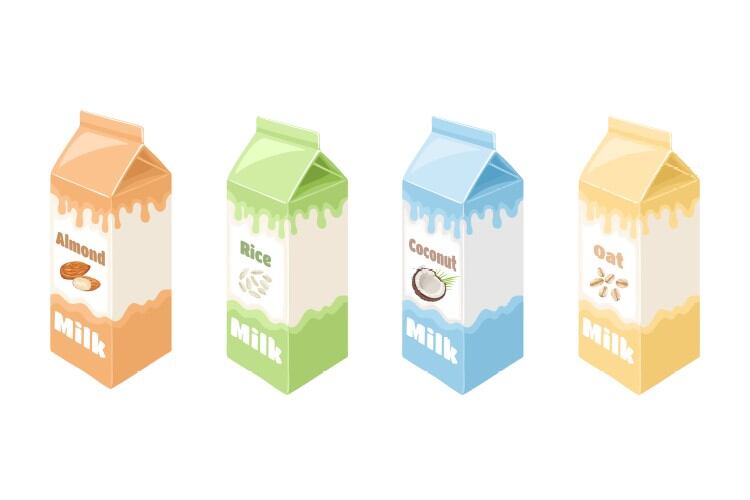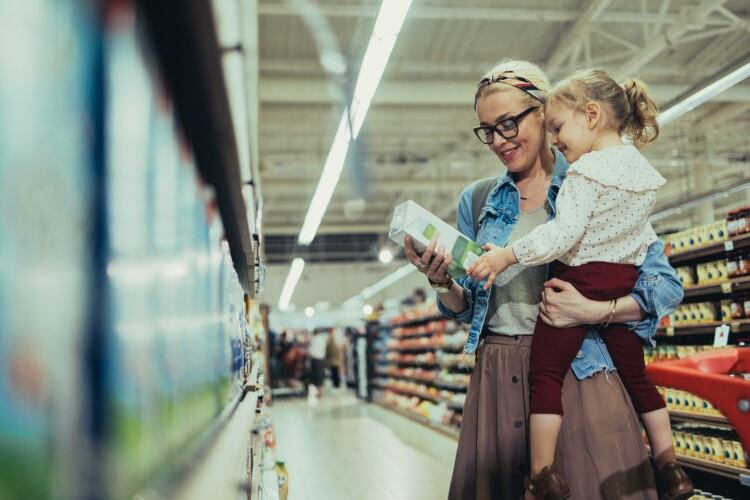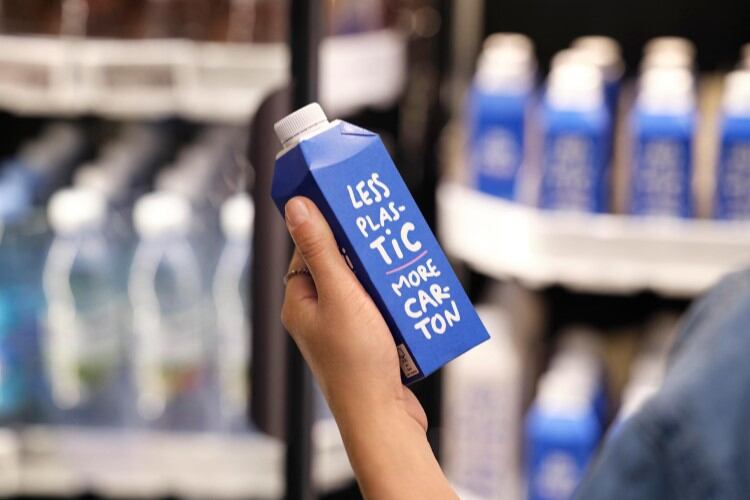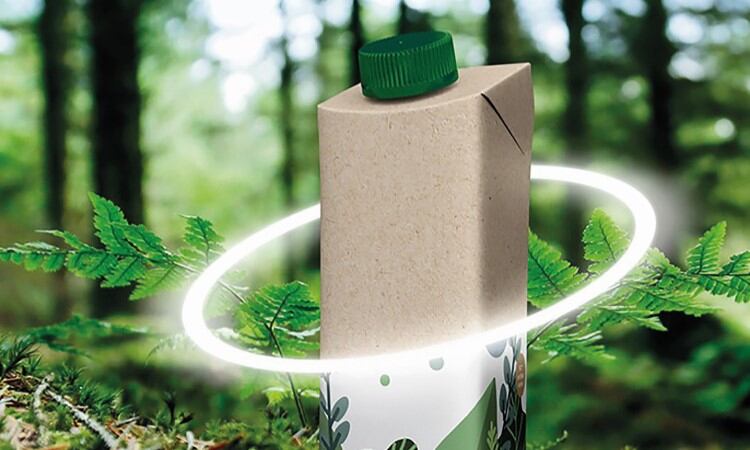From bare-paper looks to labels dominated by marketing messages, plant-based milk alternatives choose different ways to catch the eye of the consumer. But with sales falling in the past year, how are brands looking to innovate? We speak to experts from packaging manufacturers SIG and Tetra Pak to find out more.
“Manufacturers of plant-based dairy and cream alternatives often focus on minimalistic designs that are visual signifiers of clarity, naturalness, and purity, designed to appeal to consumers seeking a healthier and simpler lifestyle,” opened Julia Trebels, category and consumer insight manager at SIG. “Soft, earthy colors and clean, uncluttered layouts contribute to a minimalist aesthetic and reinforce the character of simplicity. However, our customers and their consumers not only pay attention to the visual design, but also specifically to the nature of the packaging itself.
“Naturalness must not be expressed in the visual language alone but must be anchored in the core of the packaging itself. Customers are consciously opting for packaging that not only optimally protects the quality of their products, but also forms a holistic concept of product and packaging.”
In order to emphasize the natural, plant-based origin of their products, packaging that scores in terms of the environment is equally in demand, she added.
Tetra Pak vice-president packaging materials, sales and distribution solutions Marco Marchetti agrees that the growth in the segment – predicted to continue at a CAGR of 6.6% to 2033 – is presenting brands with challenges to stand out on the shelf. The company’s Tetra Pak Artistry portfolio of packaging material effects is a response to that, he told us. “This includes Tetra Pak Craft, which gives the package the natural look of bare paperboard with wood fibres and is particularly suited to any product that needs to convey a sense of natural authenticity, which is often the case in the plant-based category.
“It is also encouraging to see that the food and beverage industry, including manufacturers of dairy alternatives, is increasingly adopting our plant-based packaging portfolio, such as straws, packaging layers and caps. Derived from sugarcane, plant-based polymers are traceable across all stages in the supply chain, from feedstock production to consumption.”
Reducing food waste is another key consumer concern, too, he added. “The Tetra Pak Index 2023 shows that 63% of people are seeking to plan food shopping more carefully to minimise food waste. As such, having the right sizing has become an important differentiator for all manufacturers, as well as effective resealing, allowing consumers to travel with on-the-go beverages without worrying about spillage.”
Aseptic carton packaging meanwhile remains well-placed to cater for the needs of plant-based milk alternatives, both from food safety and branding perspective. What makes this packaging format so popular, and what other options are there?
“There are plenty of reasons why aseptic cartons are a perfect fit for shelf-stable plant-based milk alternatives,” said SIG’s Julia Trebels. “For example, due to their high share of renewable materials obtained from responsible sources and the resource-efficient utilization of those materials aseptic cartons have a lower environmental impact compared to other packaging materials, confirmed in a number of comparative ISO-compliant, critically reviewed life-cycle assessments, this makes them a perfect complement to products that focus on sustainability and appeal to consumers who make conscious choices at the point of sale and who want to contribute to a more sustainable lifestyle.”
Meanwhile, the large printable surface area of aseptic cartons is ideally suited to provide product information, branding elements, and promotional messaging, she added.
“The combination of a long shelf life without refrigeration, excellent protection, convenience, a highly sustainable profile, and flexible options makes aseptic cartons an ideal packaging solution for shelf-stable plant-based dairy alternatives, meeting both consumer preferences and sustainability goals of manufacturers.
“Aseptic carton packs not only appeal to consumers, but manufacturers often consciously choose this packaging solution as it is a good investment in the future that can support manufacturers achieve their environmental targets.”
She revealed that there has been increase in demand for the company’s aseptic carton packs for plant-based dairy alternatives. “Manufacturers are convinced by the high share of renewable materials used and the resource-efficient utilization of those materials,” Trebels added.
Tetra Pak’s Marco Marchetti chimed in with a similar sentiment. “Perishable liquid foods, such as plant-based drinks, would decay and spoil over short periods of time if not properly processed, packed or kept at temperatures between 4C and -18C,” he explained. “Given shelf life of perishable food is key to transport and distribution in remote areas, failure to properly protect such foods could pose risks to human health and hinder the acceleration of the sustainable food systems transition.
“Fortunately, proven solutions to safely handle sensitive liquid foods already exist, especially those provided by aseptic processing and packaging, such as paper-based beverage cartons. Here, everything in the production chain is commercially sterile, including food, packaging materials and equipment, as well as the environment in which the food is packaged.”
With environmental sustainability a major trend in packaging choice and NPD, how is Tetra Pak progressing its work in sustainable aseptic beverage carton design? Marchetti told us the company is expanding the portion of renewable materials in its aseptic cartons and using plastics derived from plants. “We are also expanding the use of certified recycled polymers, to cover new packaging formats, product categories and geographies, committing to incorporate a minimum of 10% recycled plastic content on average across our beverage cartons sold in Europe by 2030. This requires advancements in chemical recycling and the implementation of the mass balance approach to ensure suitable food-grade materials.”
This approach to packaging circularity ‘goes further’, he added. “Design for recycling, simplifying material structures and increasing the paper content are key to shift from high-carbon, fossil-based materials to low carbon, renewable ones.” The company is currently validating an aseptic carton that incorporates a paper-based barrier, which is suitable for ambient liquid dairy products, e.g. UHT milk; the solution could be in production at industrial scale by 2025.
Sustainability is indeed front-of-mind for brands, SIG’s Trebels confirmed, adding that the company’s on-the-go carton bottle SIG DomeMini caters to brands that want to experiment with combining convenience and sustainability. “In the realm of packaging innovation in the plant-based dairy category, manufacturers are increasingly prioritizing sustainability aspects to differentiate their products on shelves,” she explained.
“Predictions suggest a shift towards proven sustainable packaging solutions made from renewable materials and reducing the use of fossil resources. Materials like renewable paperboard and plant-based polymers are gaining traction due to their favorable environmental profile. Design options are likely to focus on communicating sustainability, with emphasis on certifications. Additionally, manufacturers are exploring lighter packaging options to minimize carbon footprint and transportation costs.
“This sustainability-driven approach is significantly influencing R&D efforts, with a focus on developing innovative packaging solutions that align with consumer demand for even more sustainable choices.”
According to Tetra Pak’s Marchetti, paperization is a growing trend throughout the food and beverage industry. “Our 2023 B2B research shows that greenhouse gas emissions, food waste and plastic littering are considered as the top three environmental sustainability concerns for F&B manufacturers,” he told us.
“This is echoed in our 2023 Sustainable Packaging Consumer research, in which 76% of respondents said they are concerned about environmental issues, with a fifth identifying a ‘package made only with renewable materials’ as one of the top three improvements they expect around carton packaging. So, packaging solutions that expand the amount of paper and lower the carbon footprint while ensuring food safety, can help the industry overcome these challenges while addressing consumer expectations.”




